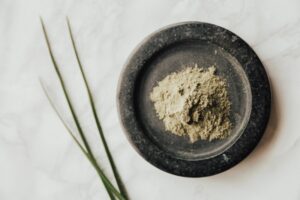Millions of people use kratom to relieve pain or to cope with the symptoms of depression. But what is the link between kratom, pain and depression? How can kratom help you relieve the symptoms of these conditions? In this article, we will explore the connection between pain and depression. But we will also look at kratom as a natural remedy for both of them.
The Link Between Pain and Depression
There are many studies that prove the link between chronic pain and depression. People suffering from chronic pain are more likely to experience depression. And it is only natural that when you are suffering from long-term pain your mood is also affected, therefore pain-induced depression is a common condition that affects many chronic pain patients. Pain causes stress, can be isolating, and damage personal relationships. All these circumstances but there is more. According to different studies, many of the brain regions involved in mood management are also related to pain. This factor seems to reinforce the link between pain and depression.
And due to this connection, there is not only pain-induced depression, but also depression-induced pain. In some cases, depression can cause physical symptoms, such as joint pain or headaches. And there seems to be a physical cause to this response: people with depression often have higher levels of cytokines, which are a type of protein that can increase inflammation.
Hence, many therapies (both conventional and alternative) and medications are looking for ways to treat both conditions.
But what is the connection between kratom, depression, and pain? Could kratom relieve the symptoms of pain and depression? We will explore it below.
Kratom and the Opioid System
When you think of kratom, a green fine powder is arguably the first thing that comes to your mind. But where does that powder come from? Kratom is the common name given to a tree called Mitragyna speciosa. This tree is native to Southeastern Asia and is in the same family as coffee, the Rubiaceae. And millions of people have started using kratom to treat pain, anxiety, depression, or even to overcome an addiction, such as opioid addiction or alcoholism.
Mitragyna speciosa grows in the humid jungles of Indonesia, Thailand or the Philippines, and right now Indonesia is the largest kratom producer and exporter in the world. Native Indonesian farmers handpick the best leaves of the kratom trees that grow wild in the jungle or rainforest. Then, they dry the leaves using different processes. Finally, the dry leaves are ground into a very fine powder which is then sold worldwide.
Kratom contains more than 20 alkaloids that act on your body. The most potent kratom alkaloids are mitragynine and 7-hydroxymitragynine. These alkaloids bind to the opioid receptors that are found throughout your body. Do not let the term “opioid” scare you away: these receptors are part of the opioid system. Yes, we have an opioid system. And it even produces its (our) own endogenous opioids, such as endorphins or dynorphins, as well as the aforementioned opioid receptors.
The opioid system manages pain, mood or stress. And when an external substance ––which can be kratom, opiates or even dark chocolate––, binds to the opioid receptor, it stars a signaling process that tells your brain to relieve pain, uplift your mood or reduce stress. So, since kratom can trigger these signals, we can say that there exists a link between kratom, pain and depression.
Kratom, Pain and Depression
What is the connection between kratom, pain and depression? By activating the opioid receptors, kratom will help you relieve pain and improve your mood at the same time. But let’s take a closer look at kratom effects and how they can help you if you are coping with pain and depression.
- Analgesic effects: Kratom can help you relieve pain. In fact, many kratom users consume this herb to ease chronic pain. Also, feeling less pain will help you perform more tasks and activities that may even strengthen your bonds with your family and friends, which also could relieve the symptoms of depression.
- Euphoric effects: Thanks to its euphoric, uplifting properties, kratom will help you relieve the symptoms of depression. Kratom users report that this plant makes them feel happier and enhances their mood. That’s why there are many people are now using kratom to treat the symptoms of depression.
- Anxiolytic effects: Kratom can also relieve the symptoms of anxiety, which is also closely related to depression. Moreover, pain also often causes stress and even anxiety. Thanks to its anxiolytic effects, kratom could relieve pain-induced stress.
- Energizing effects: Fatigue and lack of motivation are common symptoms of both pain and depression. At low doses, kratom has energizing effects that will give you an energy boost that will allow you to fight fatigue and become more motivated.
- Relaxing effects: Kratom can also help you achieve calm and relaxation. It can also help you fight insomnia.
Best Kratom Strains for Pain and Depression
Now that you have learned about the link between kratom, pain and depression, you may be wondering about the best strains for pain and depression. Let’s talk about kratom types and strains first. There are three types of kratom (white, red, and green) and a large number of strains (or subcategories), such as Indo, Bali or Maeng Da. Each strain has a particular set of alkaloids. Therefore, the effects may vary more or less slightly depending on the strain that you use. However, the main effects that you will get from kratom will mainly depend on the kratom type (that is, white, red or green):
- White kratom: Are you looking for potent energizing and uplifting effects? White strains are your choice. White Maeng Da and white Borneo are great choices if you want to fight pain and get an energy boost.
- Red strains: Red kratom has calming properties (that can be sedative at high doses). For many users, red strains are the best for pain. Nevertheless, all kratom strains have analgesic properties. According to kratom users, red Maeng Da can help you relieve pain, improve your mood and increase motivation. However, you should be very careful with your dosage.
- Green strains: Green kratom strains are milder than the red and white strains. But even so, they can be very effective, since they possess all the properties of kratom. Green Malay is a people’s favorite thanks to its analgesic, relaxing, and euphoric properties.
Trying different kratom strains can help you choose the one that works best for you. Moreover, it can also help you prevent kratom tolerance.

How to Use Kratom Safely
Kratom is a safe substance when used properly. However, it can also cause side effects that can be very bothersome in some cases. Most of these side effects are due to high doses and inappropriate use. And by inappropriate use, we mean a frequent use (for example, using kratom every day or more than once per day). Frequent, regular use can also end up in kratom tolerance, which means that you will need larger doses to notice the effects of kratom. And of course, it will also increase the risk of experiencing side effects.
Kratom Side Effects
- Dehydration
- Constipation
- Drowsiness
- Dizziness
- Headaches and migraines
- Nausea and stomach upset
- Eye wobbles
Avoiding large doses (that is, 5 grams or more of pure kratom powder), using pure leaf powder instead of extracts, changing kratom strains regularly, and avoiding taking kratom on a daily basis can help you prevent these side effects.

